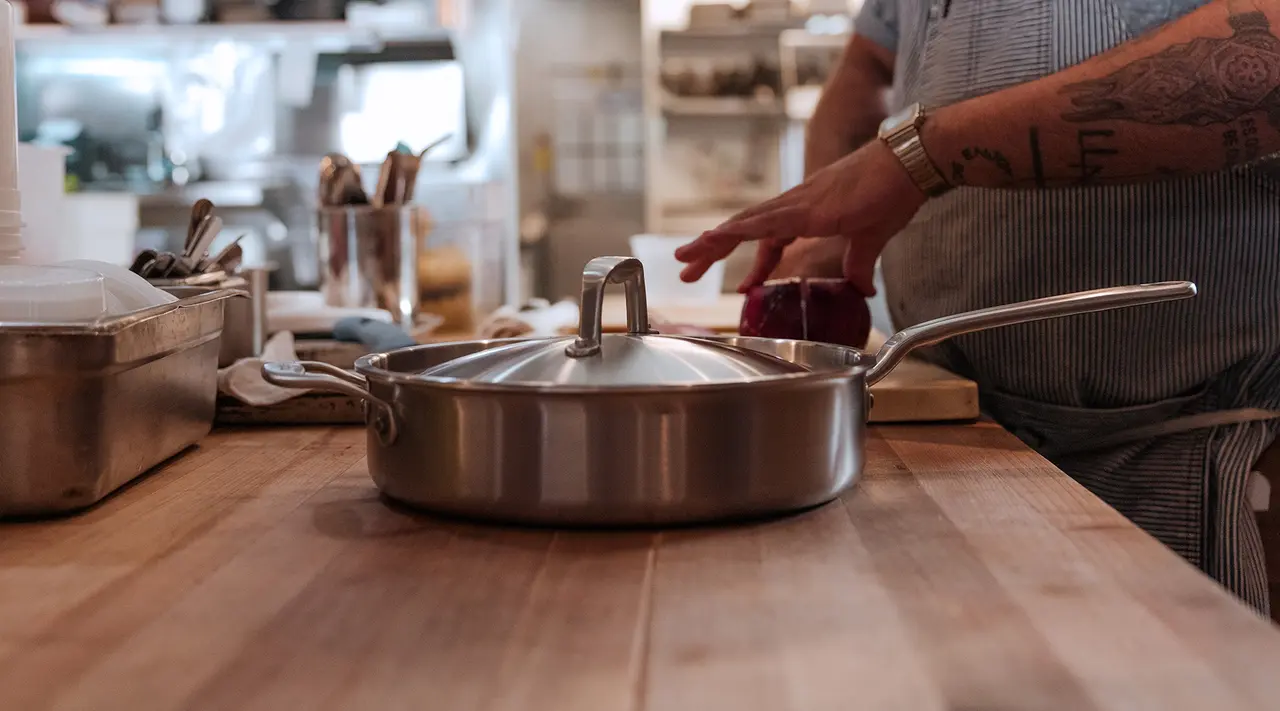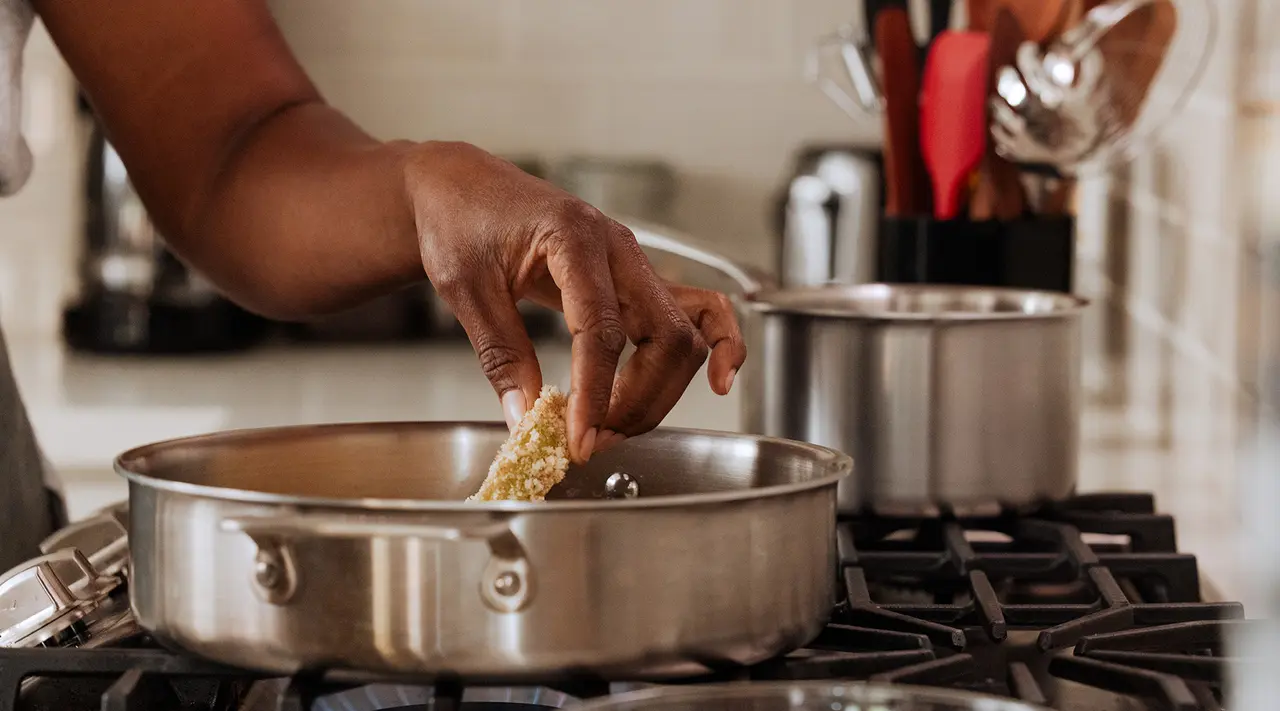Frying pans and sauté pans may not seem like it at first glance, but they are actually distinct from one another—and today, we’re going to explain the difference. By understanding the unique properties—namely size, shape, and volume—of each of these pans, you’ll be able to use both more effectively, and maybe even improve your cooking game along the way.
Understanding the Basics

In order to understand the difference between a frying pan and a sauté pan, you first need to understand the function of each pan.
What Is a Sauté Pan?
Sauté pans have a wide, flat bottom and straight, relatively tall sides, a bit like a large, squat saucepan. Those tall sides serve a dual purpose: first, they help contain the food or liquid inside to avoid splashing; second, they make for a slightly larger cooking surface area than the sloped sides of a frying pan.
This makes sauté pans a solid pick for simmering and braising, and since they’re typically made of stainless steel, they’re also great for searing meat before adding your braising liquid.
Pros and Cons of Sauté Pans
One of the best things about a sauté pan is its high, straight walls, which allow you to add more food or liquid to the pan than with a similarly-sized frying pan. On the flip side (no pun intended), a sauté pan’s wider base makes it quite a bit heavier than a frying pan: while our Stainless Clad Sauté Pan has the exact same diameter as our 10” Stainless Clad Frying Pan, it weighs a full 25% more. This added weight can be cumbersome when you need to flip or toss your food.
What Is a Frying Pan?
Look at a cross section of a frying pan, and you’ll notice that the edges flare outward slightly, a bit like a tulip. This shape makes it so that when you go to toss a pan of, say, fried rice, the bits of food can travel seamlessly up the sides and back into the pan, allowing you to stir, toss, and flip with relatively little effort. Frying pans also conveniently come in pretty every material you can think of, from non stick to carbon steel to ceramic.
Pros and Cons of Frying Pans
While a frying pan excels at quick preparations like stir-frying, pan-frying, and sautéing, it does a slightly less stellar job with liquid-heavy recipes like braises. That’s because it has a slightly lower capacity than a sauté pan, making it more prone to spills, drips, and splatters.
Difference in Cooking Techniques
To sauté a dish, you essentially need two things: a relatively wide surface area and slightly flared walls. This means that, counterintuitively, a frying pan will typically work better for sautéing than an actual sauté pan.
However, a sauté pan is the best choice for simmering, frying, and other liquidy preparations—all of which we’d caution against trying to do in a frying pan. While a pan sauce or reduction is probably fine, we wouldn’t recommend trying to make an entire curry or batch of marinara sauce in a frying pan (unless you like to live life on the edge—in which case, we probably can’t stop you).
Versatility and Specificity
In many cases, a frying pan or sauté pan can be used interchangeably: for example, either pan will produce an equally good sear on a steak or piece of fish (as long as they’ve got roughly the same amount of cooking surface).
If you’re making a pan sauce, however, the frying pan’s rounded corners will allow for easier whisking and won’t trap bits of flour or butter. A frying pan is also better than a sauté pan for quick, high heat recipes that require a lot of tossing, like a stir-fry.
How to Choose the Right Pan for Your Needs

While a frying pan is probably the most versatile pan you can buy, it still depends on what you tend to cook on a daily basis.
Assess Your Cooking Style
Let’s say you’re strictly a scrambled-eggs-and-grilled-cheese type of cook: a small frying pan will do a fine job, and won’t take up a ton of space in your cupboard or pot rack. If, on the other hand, you do a lot of braising or shallow-frying, you might want to pick up a sauté pan instead (though honestly, we recommend getting both if you can).
Kitchen Space and Storage Capabilities
Because sauté pans tend to be on the larger side compared to most frying pans, they tend to weigh a bit more and take up more storage space. The difference might be minimal if you have a larger kitchen or ample cabinet space, but it may not be worth it for tiny apartment kitchens—especially if you don’t see yourself using it all that often.
Ready to Shop?
These two staple pieces of cookware both play vital—though not identical—roles in your kitchen. Since our Sauté and Frying Pans are both made using our 5-Ply Stainless Clad base for a powerful sear and stellar heat distribution, you can’t really go wrong with either one.

































